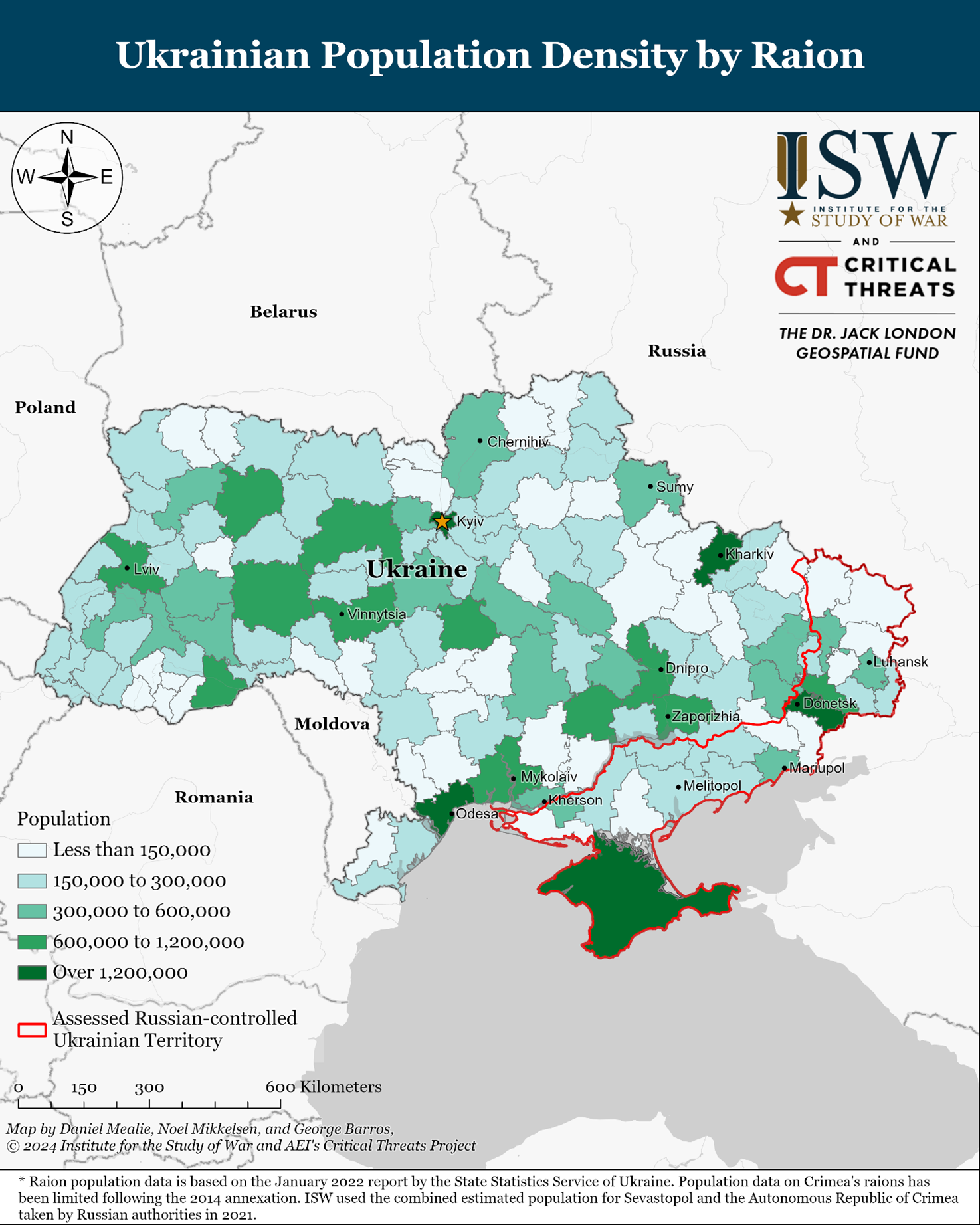 |
 |
Fact Sheet: The Kremlin's Occupation Playbook: Coerced Russification and Ethnic Cleansing in Occupied Ukraine

Fact Sheet
The Kremlin's Occupation Playbook: Coerced Russification and Ethnic Cleansing in Occupied Ukraine By Karolina Hird
Russia’s war in Ukraine is a war for people, not just land. The lives, freedom, and identities of nearly five million Ukrainians currently under Russian occupation and the nearly five million more whom the Kremlin has illegally deported to Russia, as well as the millions who have fled their homeland to other parts of Ukraine or abroad are at stake.
- The Kremlin wants control of Ukraine’s people. Russian President Vladimir Putin has invaded Ukraine twice not mainly because he desires Ukraine’s land, but rather because he seeks to control its people. Putin’s project, explicitly articulated in the 2021 article he published justifying the 2022 full-scale invasion, is the destruction of Ukraine’s distinctive political, social, linguistic, and religious identity to make real his false ideological conviction that Ukrainians are simply confused Russians with an invented identity, language, and history that a small, Western-backed minority is seeking to impose on the majority of inhabitants.
- Putin seeks to use Ukraine as a source of mobilizable manpower in part to address Russia’s demographic issues. The war has exacerbated Russia’s demographic challenges because 800,000 – 900,000 Russians fled the country after the start of the war, including up to 700,000 who ran after Putin ordered partial mobilization in September 2022. Russian Federal State Statistics Service (Rosstat) data shows that Russia’s labor shortage amounted to 4.8 million people in 2023, a problem that has reduced Russia’s economic output. Rosstat also estimated in 2023 that Russia’s population will decline naturally at a rate of more than 600,000 people per year until 2032. Ukrainians in Russian occupied Ukraine and those whom Putin has illegally deported to Russia amount to roughly seven percent of Russia’s pre-war population.
Russia’s Occupation Playbook:
Russia first began developing its occupation playbook in 2008 when it invaded Georgia and occupied the Georgian territories of South Ossetia and Abkhazia. Russia further developed means and methods of occupation in Ukraine after it invaded and seized Crimea and parts of Donbas in 2014. It has continued and expanded that playbook in the areas of Ukraine it currently occupies. The occupation playbook includes:
- Legal theater: The Russians conduct sham referenda and use the manipulated results to create a pseudo-legal veneer to justify annexation.
- Passportization: Russian authorities coerce occupied populations to accept Russian passports by conditioning essential healthcare and other services on the possession of such passports. The Kremlin uses this forced passportization to claim that occupied populations “willingly” accept Russian citizenship and that Russia’s claims to the occupied areas are incontrovertible and irreversible.
- Social services as a multigenerational poison pill: Russian occupation authorities use the issuance of birth certificates, pensions, state payrolls, and maternity capital payments to force residents of occupied areas to become reliant on occupation administrations. Requirements to accept Russian citizenship to receive some of these benefits contribute to the forced passportization efforts.
- Patronage programs: The Kremlin has directed Russian regional governments to establish patronage relationships with areas of occupied Ukraine to increase economic integration and foster the economic dependency of those regions on Russia.
- Demographic alterations: The Kremlin has combined the forced deportation of millions of Ukrainians with a system of incentives to bring Russian Federation citizens into Ukraine as part of a massive ethnic cleansing campaign.
- Sociocultural and linguistic manipulations: Russian authorities compel residents of occupied Ukraine to learn Russian language and highly ideologized Russian history that explicitly denies the existence of a Ukrainian identity. They severely restrict access to Ukrainian language teaching. Occupation authorities use many methods not only to indoctrinate Ukrainian youth not merely into Russian culture and ideology, but also to militarize those youth and prepare them to fight against their fellow Ukrainians on behalf of Moscow.
Occupation under hypothetical Russian victory:
Russian victory in Ukraine, achieved by a ceasefire that freezes the frontlines and maintains the Russian occupation of 18 percent of Ukrainian territory and 5 million Ukrainian people in the first instance, and using the current frontline as a springboard for further attempts to seize more Ukrainian territory in the second instance, will further concretize the destruction of Ukraine as a sovereign state.
De-occupation and reintegration in the case of Ukrainian victory:
Russian efforts to cleanse occupied Ukraine and make its occupation permanent are still reversible. But the longer Russia is allowed to occupy Ukrainian lands the harder it will be to reintegrate them into Ukraine, to say nothing of the additional lives lost and irrevocably damaged in the meantime. The liberation of Ukrainian lands is thus urgent. Delay powerfully advances Russian objectives to the detriment of Ukraine and the West. The West must act decisively to help Ukraine — and it must act now.
